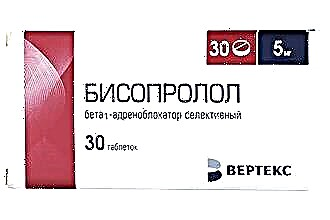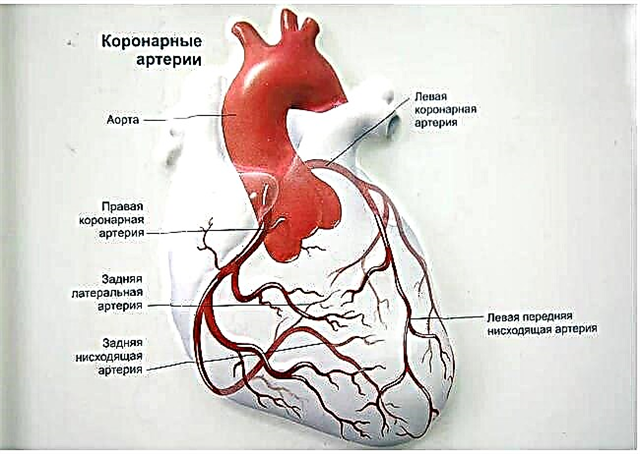 Treatment of stenosis of the larynx in the early stages of development is carried out with the help of corticosteroids, antibiotics, antihistamines and antiallergic agents. Stenosing phenomena in the ENT organs occur most often against the background of the development of infectious diseases - laryngitis, scarlet fever, tuberculosis, typhus or measles. In case of critical narrowing of the larynx, it is necessary to call a doctor and provide the patient with emergency care.
Treatment of stenosis of the larynx in the early stages of development is carried out with the help of corticosteroids, antibiotics, antihistamines and antiallergic agents. Stenosing phenomena in the ENT organs occur most often against the background of the development of infectious diseases - laryngitis, scarlet fever, tuberculosis, typhus or measles. In case of critical narrowing of the larynx, it is necessary to call a doctor and provide the patient with emergency care.
Hypoventilation of the lungs leads to impaired breathing and the work of the cardiovascular system, which can be fatal.
When to call an ambulance?
The clinical manifestations of laryngeal stenosis are determined by the cause of the development of pathological processes in the respiratory organs. A typical symptom of the disease is a sudden disturbance in breathing, which can lead to suffocation. As a rule, asphyxia is preceded by characteristic respiratory disorders, which may be evidenced by:
- spastic cough;
- shallow breathing;
- threadlike pulse;
- cyanosis of the lips and mucous membranes;
- decrease in temperature;
- dilated pupils;
- loss of consciousness.
If an attack occurs, you need to urgently call the ambulance team, since with stenosis of 2 and 3 degrees, it is almost impossible to cope with the problem on your own.
In the case of false croup, which is more common in young children, attacks of spastic cough can last at least 30 minutes.
To alleviate the child's condition, it is necessary to provide him with emergency assistance, which consists in the implementation of certain therapeutic measures.
Urgent care
The main goal of emergency care is to reduce the severity of symptoms of laryngeal stenosis before the arrival of the ambulance team. To reduce the swelling of the respiratory mucosa, they resort to distracting therapy. A positive effect on the patient's body is provided by:
- foot baths - pour hot water into the basin, adding 2 tbsp. l. dry mustard; perform the procedure for 10-15 minutes until breathing is restored;
- warming compresses - put 2 mustard plasters on each leg in the calf muscles for 10 minutes;
- steam inhalation - dissolve 1 tsp of soda in 250 ml of hot water; inhale for 5-7 minutes.
Heat therapy promotes the expansion of blood vessels in the extremities, as a result of which blood circulation and the outflow of intercellular fluid from the larynx is accelerated. This helps to reduce swelling and, accordingly, increase the inner diameter of the trachea. However, it should be borne in mind that it is impossible to put warming compresses on the throat with the development of purulent inflammation in the airways, as this will only aggravate the patient's condition and provoke the spread of infection.
Urgent care for stenosis of the larynx also consists of ventilating the room and humidifying the air. Remove tight clothing from the victim to facilitate breathing. It is recommended to give a warm alkaline drink (warmed milk, herbal teas, mineral water), which will moisturize the mucous membranes and help stop barking coughs.
Sedation therapy is one of the key components of emergency care. Panic attacks make the patient breathe more often, as a result of which he feels the lack of oxygen more acutely. To alleviate the patient's condition, it is recommended to inject intramuscularly "Seduxen" or "Sodium oxybutyrate".
For grade 2 laryngeal stenosis, it is recommended to use antihistamines such as Prednisolone, Diprospan, or Dexamethasone Phosphate. Due to a coughing fit, the patient will not be able to take the pills, so antiallergic drugs are administered parenterally.
Diagnostics
If symptoms of stenosis of the larynx appear, it is necessary to seek the help of a specialist even before the attack. During a visual and instrumental examination, he will be able to determine for sure the cause of the pathology and the subsequent treatment method. Delay or inadequate treatment of stenoses entails irreversible processes, and sometimes death.
The most objective methods for diagnosing ENT disease are:
 CT scan of the larynx;
CT scan of the larynx;- laryngoscopy;
- Ultrasound of the thymus;
- tracheobronchoscopy;
- X-ray of the esophagus;
- microbiological examination of throat swab.
The doctor can make an accurate diagnosis only after a thorough examination of the patient's ENT organs. After determining the reasons for the development of stenosis of the larynx, it will be necessary to exclude the factors that contributed to the development of pathology.
During the course of therapy, it is recommended to follow a sparing diet, which consists in the use of mild food and a large amount of alkaline drinks.
Therapies
Treatment of stenosis of the larynx is carried out in stationary conditions under the supervision of an otolaryngologist and infectious disease specialist. Depending on the degree of stenotic lesions of the ENT organs, they resort to conservative or surgical methods of therapy. Traditionally, the following medications are included in the treatment regimen for laryngeal stenosis:
- anti-inflammatory;
- antihistamines;
- sedatives;
- decongestants;
- dehydration;
- antibiotics;
- corticosteroids;
- antipsychotics.
In case of severe narrowing of the airway lumen, surgical intervention is indicated. Even at the stage of hospitalization, tracheal intubation is possible, in which a hollow tube is inserted into the airways through the oropharynx.
In acute stenosis, characterized by complete overlap of the trachea and glottis, an emergency operation (tracheostomy) is performed.
In the process of surgery, an incision is made in the anterior wall of the trachea, into which a tube is inserted to normalize breathing.
Drug overview
Elimination of the symptoms of suffocation and respiratory failure is the main goal of drug therapy for laryngeal stenosis. In a hospital setting, it is very important to limit the patient's motor activity, which only enhances the severity of pathological symptoms. To reduce swelling of the respiratory tract and eliminate the infection that provoked the development of pathology, use:
| Types of drugs | Name of drugs | Mechanism of action |
|---|---|---|
| anti-inflammatory |
| eliminate inflammation, relieve pain and promote resorption of infiltrates in the larynx |
| antibacterial |
| destroy the bacterial flora in the respiratory tract, as a result of which the severity of inflammation and swelling decreases |
| corticosteroids |
| quickly eliminate inflammation and prevent the accumulation of intercellular fluid in the mucous membranes of the laryngopharynx |
| antiallergic |
| inhibit the biosynthesis of inflammatory mediators, reduce the severity of allergic manifestations and prevent the occurrence of Quincke's edema |
| dehydration |
| have a pronounced diuretic effect, as a result of which swelling in the mucous membranes of the airways decreases |
| bronchodilators |
| relieve bronchospasm and barking cough, are used in the treatment of obstructive diseases of the upper respiratory tract |
| antipsychotics |
| inhibit the activity of the nervous system and eliminate the symptoms of psychotic disorders that occur against the background of respiratory failure |
It is not recommended to use corticosteroids for the treatment of laryngeal stenosis in persons with diabetes mellitus, cirrhosis of the liver and hypothyroidism.
It should be noted that only compensated and subcompensated stenoses are subject to drug therapy. If the cause of stenosing lesions is the development of diphtheria, the administration of toxoid or an anti-diphtheria vaccine will be required.
Superficial tracheostomy
With decompensated laryngeal stenosis, drug therapy is not used. Normal breathing of the patient can be restored only in the case of a superficial tracheostomy. It should be noted that in the presence of absolute indications, the surgeon must perform all the necessary surgical procedures without delay and under any conditions.
Loss of consciousness, threadlike pulse, dilated pupils and involuntary defecation are direct indications for tracheostomy. How is the operation performed?
- do local anesthesia with Novocain;
- after probing the hyoid bone, the skin is cut in layers;
- the revealed sternohyoid muscles are dissected and extended using a special metal expander;
- a thyroid capsule is cut under the cricoid cartilage;
- a sharp hook is inserted into the thyroid-hyoid membrane to fix the tissues;
- to prevent an attack of coughing, "Dikain" is injected into the trachea;
- using a sharp-pointed scalpel, the doctor opens several rings of the trachea;
- a tracheotomy tube is inserted into the resulting hole, which is additionally fixed with sterile gauze on the neck.
After restoring normal breathing, the patient is hospitalized and sent to the intensive care unit. In the hospital, he is examined to find out the reasons for the development of stenosis, after which an appropriate course of drug therapy is prescribed.

 CT scan of the larynx;
CT scan of the larynx;

